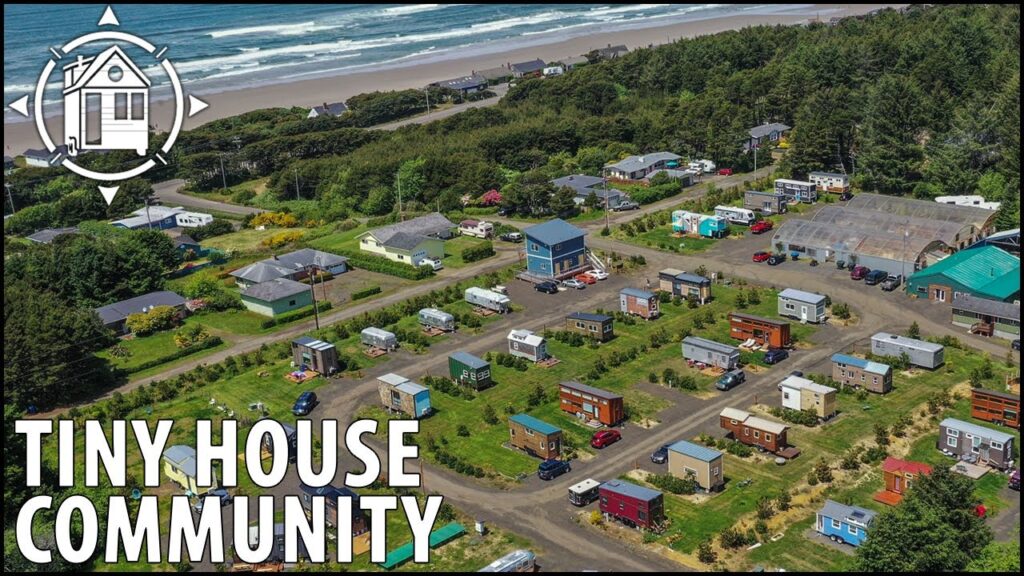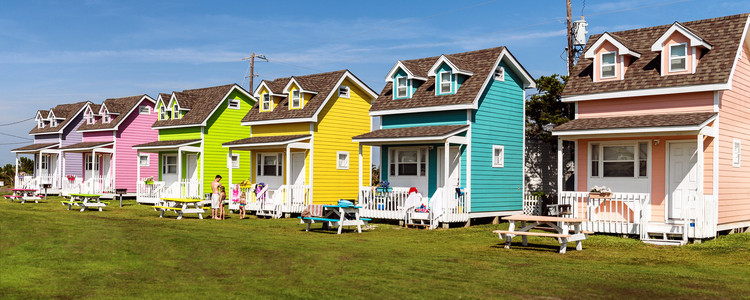Table of Contents
Tiny house community: Visualize a location where cozy homes are surrounded by open land and where relationships are close and interconnected. This is what it means to live in a tiny house. It is not a trend in society, but a way of life and a way of life for those who want to live in simplicity and conjoin with others. This is an additional way of life, this time with tiny house communities, which not only embraces minimalism, but also holds value since it is possible to engage with those who live around you.
Given the surge in population and, in consequence, the cost of housing, tiny house communities are a charming and rational response. Downsizing is often associated with a certain dread, but one cannot deny that the comforts of excess and the hell that accompanies it are an additional weight. Are you one of those enchanted by the beauty of tiny houses? If you are, let’s examine what attracts people to tiny house communities and, most importantly, how it might suit you.
What is a Tiny House Community?

A tiny house community consists of individual homes within the range of 100 to 400 square feet. These communities center around minimalist living while aiming to build connections with one another. Usually composed of communal resources like gardens and kitchens, tiny house communities enhance cooperation and strengthen community ties. This sense of community cooperation and collaboration is vital in these living atmospheres.
Design, philosophy, and functionality greatly vary among tiny house communities. While some communities center on the fundamental principles of sustainability and eco-friendly patterns of living, others focus on cost reductions to accommodate people who find it hard to access the housing market at current prices.
With Innovative design and extraordinary space usage to meet the comfort needs of residents living in tiny homes, the community and the homes reflect great resourcefulness and imagination. Living in a tiny house community requires narrative resourcefulness. The communities provide a cozy and safe environment, while the tiny homes reflect the personality of the resident.
The Advantages of Living in a Tiny House Community
Residents of a tiny house community enjoy many unique experiences. The intertwined simplicity of life with the neighborhood social features can foster friendships for decades.
Abstract financial goals become more achievable given the affordability of tiny house communities. Living within a tiny house community results in reduced overall expenses, thereby improving the sense of financial freedom.
The design of many tiny house communities promotes physical activity within the community. Activities such as gardening, cooking, and hosting events are more sociable approaches to community building. There is no denying that the eco-friendly aspects of tiny living are a major bonus. The diminished resource consumption and lower carbon footprints direct tiny living aligned with eco-conscious values.
The minimalist lifestyle that comes with tiny living promotes positivity and purpose. The lack of physical clutter leaves the space within the home to highlight meaningful activities, magnifying joy.
The Challenges of Living in a Tiny House Community
Challenges are inevitable when it comes to living in a tiny house community. As a resident, organizational creativity is a must. Schmidt and Gibbons argue that “In dense living conditions, residents’ privacy and personal space may come under pressure. Efforts must be made to maintain personal boundaries and a comfortable distance… from neighbors.
Legal issues and community custom restrictions are another source of resident frustration when communities are expected to grow and relieve restrictions, and when residents are unable to add their personal touch to a space. In extreme climates, tiny houses, unlike their traditional counterparts, may not be built to withstand severe conditions.
In a community, individuality is replaced by a social contract. Conflicts in patterns of behavior will require everyone to come to the table and negotiate living arrangements in a way that their community neighbors will not.
Sustainable and Minimalistic Living
Living in a tiny house community tends to emphasize simple living and maintaining a low ecological footprint. These two concepts are synergistic. Downsizing means greater simplification and aids people in concentrating on what is truly necessary in their lives. Occupying a tiny house means a personal revolution. Most possessions and materials become a burden. The waste created is diminished, moving to a simple, waste-free existence.
There is a heightened sense of demonstrable community sustainability. Most tiny houses sustain themselves through the use of green building techniques and eco-responsible construction. The use of solar energy, water harvesting, and eco-friendly toilet waste management are systems that improve house sustainability. During warm months, community members consolidate to practice mutual gardening to sustain themselves and their families. These activities, in fostering social connections, fulfill shared community eco-responsibility.
Opting to live in tiny house communities resolves to cultivating an escalated sense of appreciation for unencumbered, authentic nature and mindful living. Modern large houses completely obliterate this sense.
Design and Functionality of Tiny Houses
The Efficient Use of Space in Tiny Homes. Tiny homes are quite the amazing modern marvels of design. Each small space is able to become a cozy and comfortable haven. Innovative and flexible designs sometimes include multi-functional and pioneering adjustable furniture. For instance, a dining table that folds away and a Murphy bed that can be effortlessly stowed vertically can free up even more living space.
Clever storage designed to fit over the bed and under the bed surfaces can be designed so that nothing feels cluttered. As to the vertical design of smart shelving and balanced minimalism horizontally, shelving can eliminate the cluttered feeling of floor space. Natural light is key to achieving the desired aesthetic in a small home. Large windows and skylights create the illusion of openness.
The designs incorporate sustainability as a key principle. They include high-efficiency, aesthetic, and style-conserving appliances designed to be functional and eco-friendly. The integration of modern sustainability features is the primary design principle of tiny homes.
Tips for Joining and Thriving in a Tiny House Community
Joining a tiny house community can feel like an adventure, provided you find the most suitable community. Be sure to allocate time towards understanding a few so you can determine the one most aligned to your beliefs and way of living. Try to reach out to residents of the community you intend to join. You can gather a lot of information about the community and the lifestyle that residents lead by participating in the community events and meeting portals.
Understand the lifestyle that comes with tiny living. The community-building features of participating in cooperative gardening, sharing tools, and arrangements of communal food help to cement ties and also to form the community. When it comes to building relations with other residents, remember that there is also the factor of privacy that must be accounted for. It is also of great importance that there is a balance in the engagements and the community social activities.
Be prepared for adjusting to your new living arrangements. Integrated living in a tiny house community comes with its own culture and expectations that may seem heavy to begin with.
Conclusion
The communities built around tiny houses are shifting definitions of what comprises a home. For these communities, the rare opportunities of simplicity, connectivity, and sustainability converge. A tiny home is a means, but more importantly, it is a lifestyle towards the prioritization of one’s experiences and the de-emphasis of one’s belongings.
Most people who live within tiny house communities, the synergy of the community, the challenges that come from limited living space, and the dynamics of inter-community relations all positive sources of friendships and support systems. These friendships and systems are rewarding in and of themselves, as they enrich everyday life.
Living with less is much more than reorganizing one’s home and is fundamentally a relational and philosophical shift regarding one’s possessions. Innovative designs for tiny houses and the new ways people live in them mean that functional and aesthetic compromises no longer need to be the norm.
Active participation is the most important factor for people intending to join this movement. Communicating with people in potential communities and visiting possible sites can help to identify the most appropriate settlement for one’s needs. For people who want to incorporate more sustainable choices into their lifestyle, a tiny house community is likely a perfect fit for them to help enhance their quality of life.
